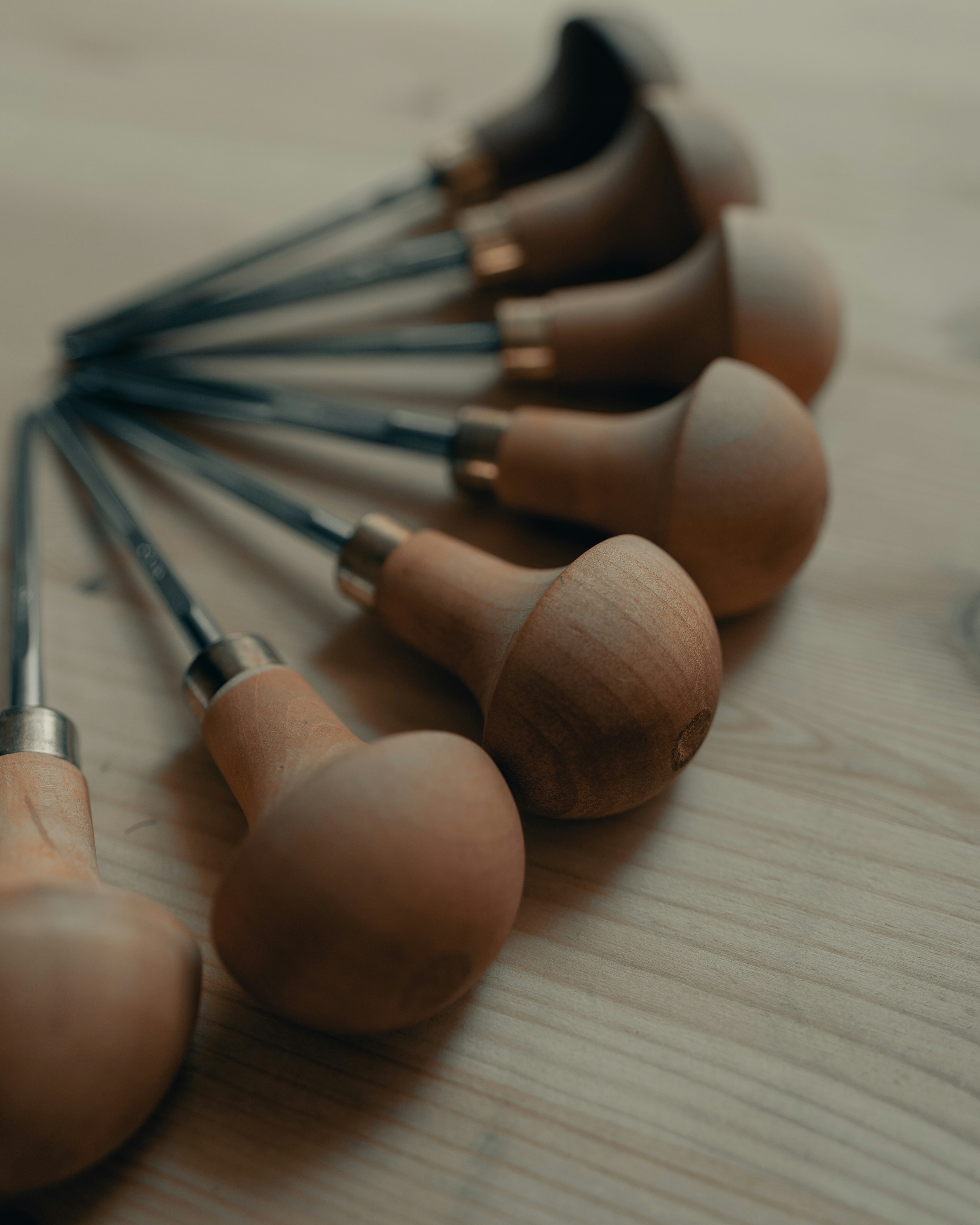The Historical Context of Japanese Hand Tools
Japanese hand tools possess a rich historical narrative that reflects the depth of Japanese cultural practices, philosophies, and craftsmanship. The origins of Japanese woodworking techniques can be traced back to ancient times when tools were primarily crafted from natural materials. The development of these tools was not merely a practical endeavor; it was deeply embedded in the cultural identity of the Japanese people. Woodworking in Japan was influenced by the principles of Zen philosophy, which emphasizes simplicity, mindfulness, and the deep connection between nature and craftsmanship. This philosophy translated into the meticulous production of tools that were not only functional but also embodied an appreciation for beauty and harmony.
During the Edo period (1603-1868), Japan experienced a significant transformation that impacted the woodworking industry profoundly. This era saw a surge in urbanization, a flourishing of the arts, and an increased demand for finely crafted goods. Craftsmen residing in cities began to hone their skills and innovations in tool design to meet the needs of both professional carpenters and hobbyists alike. The Edo period also marked the establishment of guilds, which played a vital role in preserving and transmitting traditional knowledge and techniques in tool-making. These guilds maintained high standards of craftsmanship and became repositories of techniques that had been honed through generations.
The importance of community and tradition in the context of Japanese hand tools cannot be understated. Each tool is often imbued with the spirit and sweat of the craftsman, representing not only individual skill but also a collective heritage. This reverence for craftsmanship has ensured that traditional methods and tools have been passed down through the ages, adapting to modern applications while maintaining a deep connection to Japan’s historical roots. Understanding this context is essential for contemporary woodworkers, as it enriches their appreciation for the tools they use and the practices they engage in.
Key Traditional Japanese Hand Tools
Traditional Japanese hand tools are renowned for their precision, craftsmanship, and the unique qualities they bring to woodworking. Among these tools, three stand out in their importance and functionality: the kanna (plane), nomi (chisel), and azebiki (saw). Each of these tools has been developed over centuries, reflecting the deep-rooted culture and art of Japanese woodworking.
The kanna, often regarded as a must-have in any woodworker’s repertoire, is a finely crafted hand plane used for smoothing and shaping wood surfaces. It consists of a wooden body, usually made of high-quality hardwood, and a uniquely shaped iron blade made from high-carbon steel. This design allows for exceptional control and precision, enabling the user to create an impeccable finish. The kanna is notable for its ability to achieve a glass-like surface on wood, which is a hallmark of traditional Japanese joinery.
Next, the nomi, or chisel, is indispensable for detailed carving and precise joinery tasks. Unlike Western chisels, which often employ a tapered design, Japanese nomi feature a straight, flat blade that excels in fine joinery. Its high-carbon steel construction ensures durability while allowing for a sharp edge that can be easily honed. The handles of the nomi are typically crafted from durable woods like oak or cherry, offering excellent grip and control during use. This tool is particularly celebrated for its ability to deliver clean, accurate cuts, making it ideal for intricate woodwork.
Lastly, the azebiki, a unique Japanese saw, showcases the difference in approach between Eastern and Western woodworking. The azebiki is a pull saw that cuts on the pull stroke rather than the push stroke common in Western saws. This design allows for greater maneuverability and precision when cutting complex joints or thin materials. The blade is made from high-carbon steel, ensuring sharpness and longevity, while the wooden handle often incorporates traditional craftsmanship, further emphasizing the importance of artisanal skills in tool production.
In conclusion, these traditional Japanese hand tools not only reflect the rich history and culture of woodworking in Japan but also emphasize the skill and craftsmanship involved in their creation. By utilizing high-quality materials and intricate designs, tools like the kanna, nomi, and azebiki significantly enhance the overall quality of woodworking projects, bridging the gap between ancient techniques and modern craftsmanship.
Ancient Techniques Applied in Modern Woodworking
The art of woodworking has evolved significantly over the years, yet many modern woodworkers are rediscovering the value of ancient Japanese techniques. By incorporating these time-honored practices, craftsmen can enhance their skills and achieve a level of precision and craftsmanship that power tools often overlook. One of the most revered techniques involves the use of hand planes, which are perfect for achieving a smooth and even surface finish. Japanese hand planes, or ‘kanna’, are particularly notable for their ability to create a silky finish that requires minimal sanding, thus preserving the integrity of the wood grain.
Chiseling is another essential technique rooted in Japanese tradition. The Japanese chisel, or ‘nomi’, excel in joinery applications due to their exceptional sharpness and quality steel composition. Woodworkers can achieve tight-fitting joints that enhance the durability and aesthetic appeal of their projects. By emphasizing control and precision, these chisels allow artisans to work with a level of detail that power tools cannot provide. This technique not only showcases skill but also fosters a deeper connection between the woodworker and the material being shaped.
Traditional sawing methods, including the use of ‘nokogiri’, or Japanese saws, further illustrate the connection to ancient techniques. These saws pull rather than push through the wood, allowing for greater accuracy in cuts and reducing the risk of splintering. The focus on technique and material awareness cultivates a sense of sustainability, as woodworkers learn to respect and utilize the resources available to them. By prioritizing hand tools over power tools, artisans can engage more deeply with their craft, leading to a more fulfilling woodworking experience that honors tradition while adapting to contemporary needs.
Preserving the Tradition: Contemporary Japanese Tool Makers
The landscape of Japanese hand tool making today is a vibrant fabric of tradition and innovation. Contemporary artisans are committed to preserving age-old techniques while simultaneously adapting to modern challenges. These craftsmen honor the time-tested methods of their ancestors, ensuring that the essence of Japanese craftsmanship endures amidst the rapid growth of mass-produced tools that dominate today’s market.
Several artisans stand out in the contemporary milieu, embodying the spirit of dedication and expertise that characterize traditional tool making. These modern makers not only produce exquisite hand tools but also serve as ambassadors of craftsmanship, educating younger generations about the virtues of handmade quality. By employing techniques such as forging and carving that have been refined over centuries, they create tools that are not only functional but also aesthetically pleasing artifacts of artistry.
However, the journey for these craftsmen is not without its challenges. They face stiff competition from mass-manufactured options that often lure consumers with lower prices and perceived convenience. Additionally, there is the pressing need to attract younger woodworkers who may be unaware of the advantages offered by high-quality handmade tools. As the demand for authenticity and sustainability grows, it becomes crucial to recognize these artisans as the backbone of Japanese tool making.
Supporting local makers fosters a culture that values craftsmanship and quality over mass production. For woodworkers, investing in these high-quality tools not only enhances their woodworking experience but also honors the rich traditions in which these tools are rooted. By choosing handmade over manufactured options, woodworkers contribute to the preservation of Japanese tool-making traditions while ensuring that these remarkable techniques continue to thrive for future generations.
If you’re interested in purchasing the item you seek, please click the link for additional details: #americanachoice.
https://amzn.to/3SBN3Oy
AFFILIATE DISCLOSURE: I am an affiliate for this company, I am not a paid employee.
I may receive a commission if you click a link on this page and choose to purchase something.
You can rest assured I will only share things I believe in and will be valuable to you.



